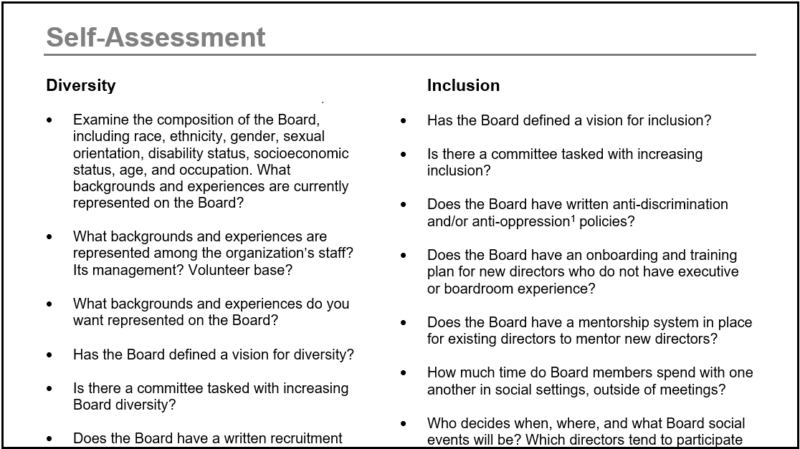Bringing the Fight for Racial Justice to Nonprofit Board Rooms
This past spring, Organizations and Transactions Clinic students Jason Fernandes (’21), Allison Gadsden (’21), and Allan Van Vliet (’20) worked with several nonprofit boards of directors on comprehensive reviews of the nonprofits’ governance documents and practices. As part of that work, they developed a tool to help the boards assess and improve their diversity and inclusion practices. Jason, Allison, and Allan reflect on their experience below.

Transactional lawyering and racial justice might seem like an odd pair. Law students interested in combating racism typically opt for litigation, where they can represent clients who have been harmed by systemic racism and pursue justice for those clients. But this spring, as racial justice protests erupted across the nation in response to the killing of George Floyd, we had the opportunity to learn how transactional lawyers can—and should—bring a racial justice lens to their work.
Many of the clinic’s clients are nonprofit organizations working to combat systemic injustice in some way, whether through direct services to communities in need, policy advocacy, or community economic development. And many of these clients recognize that combating systemic racism also requires internal changes to leadership and governance. We were fortunate in that we got to work with clients who were focused on doing this internal work—improving the diversity, equity, and inclusion of their boards and leadership teams. In response to these conversations, as well as our own interest in racial justice, we formed an internal O&T working group to explore how we could help nonprofit boards address issues of diversity and inclusion.
Our initial research was disheartening. The nonprofit sector too often embodies the problems it purports to help solve. For instance, in 2017, nonprofit boards in the U.S. were 84 percent white. The problem is worse at the top of nonprofit leadership, with just 10 percent of chief executive and board chair positions held by people of color.

However, we discovered a growing body of research on how nonprofit organizations can attract and retain candidates outside of their predominantly white and wealthy networks, and we found that organizations are increasingly working to try to reverse this trend. We coalesced these findings into a tool that nonprofit boards can use to help diagnose and solve their own issues with diversity and inclusion, and we delivered it to our clients. We’ve already seen some organizations use and share the tool in their networks. We also integrated our findings and recommendations into our clients’ existing governance documents, such as self-assessment tools and onboarding documents, so that diversity and inclusion would be baked into an organization’s governance structure, rather than a standalone goal.
It was gratifying to connect our work in the clinic, in some small way, to the national movements for racial justice. And while there’s still a lot of work and internal reckoning that has to happen in the nonprofit sector, we’re encouraged that lawyers—especially transactional lawyers!—can use their skills to help organizations combat racism and injustice.
